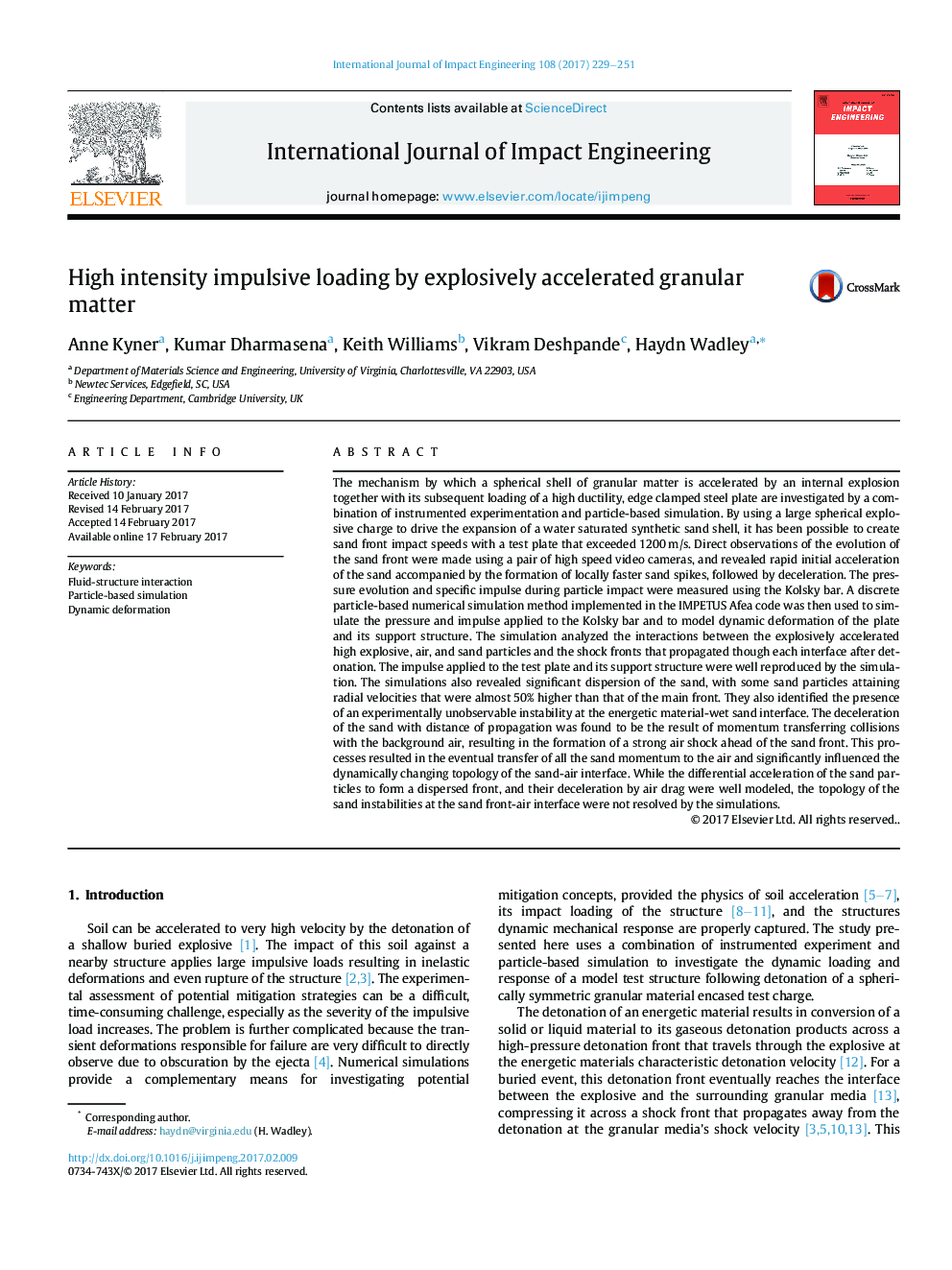| کد مقاله | کد نشریه | سال انتشار | مقاله انگلیسی | نسخه تمام متن |
|---|---|---|---|---|
| 5015523 | 1464043 | 2017 | 23 صفحه PDF | دانلود رایگان |
- High-speed imaging/simulations used to study acceleration of sand by a spherical charge.
- Sand front instability observed due to interactions with shock compressed air.
- A rapid decline in sand velocity caused by sand particle interactions.
- A Kolsky bar was used to measure the sand impact pressure and impulse.
- Particle-based simulation successfully predicted the Kolsky bar responses.
The mechanism by which a spherical shell of granular matter is accelerated by an internal explosion together with its subsequent loading of a high ductility, edge clamped steel plate are investigated by a combination of instrumented experimentation and particle-based simulation. By using a large spherical explosive charge to drive the expansion of a water saturated synthetic sand shell, it has been possible to create sand front impact speeds with a test plate that exceeded 1200Â m/s. Direct observations of the evolution of the sand front were made using a pair of high speed video cameras, and revealed rapid initial acceleration of the sand accompanied by the formation of locally faster sand spikes, followed by deceleration. The pressure evolution and specific impulse during particle impact were measured using the Kolsky bar. A discrete particle-based numerical simulation method implemented in the IMPETUS Afea code was then used to simulate the pressure and impulse applied to the Kolsky bar and to model dynamic deformation of the plate and its support structure. The simulation analyzed the interactions between the explosively accelerated high explosive, air, and sand particles and the shock fronts that propagated though each interface after detonation. The impulse applied to the test plate and its support structure were well reproduced by the simulation. The simulations also revealed significant dispersion of the sand, with some sand particles attaining radial velocities that were almost 50% higher than that of the main front. They also identified the presence of an experimentally unobservable instability at the energetic material-wet sand interface. The deceleration of the sand with distance of propagation was found to be the result of momentum transferring collisions with the background air, resulting in the formation of a strong air shock ahead of the sand front. This processes resulted in the eventual transfer of all the sand momentum to the air and significantly influenced the dynamically changing topology of the sand-air interface. While the differential acceleration of the sand particles to form a dispersed front, and their deceleration by air drag were well modeled, the topology of the sand instabilities at the sand front-air interface were not resolved by the simulations.
Journal: International Journal of Impact Engineering - Volume 108, October 2017, Pages 229-251
